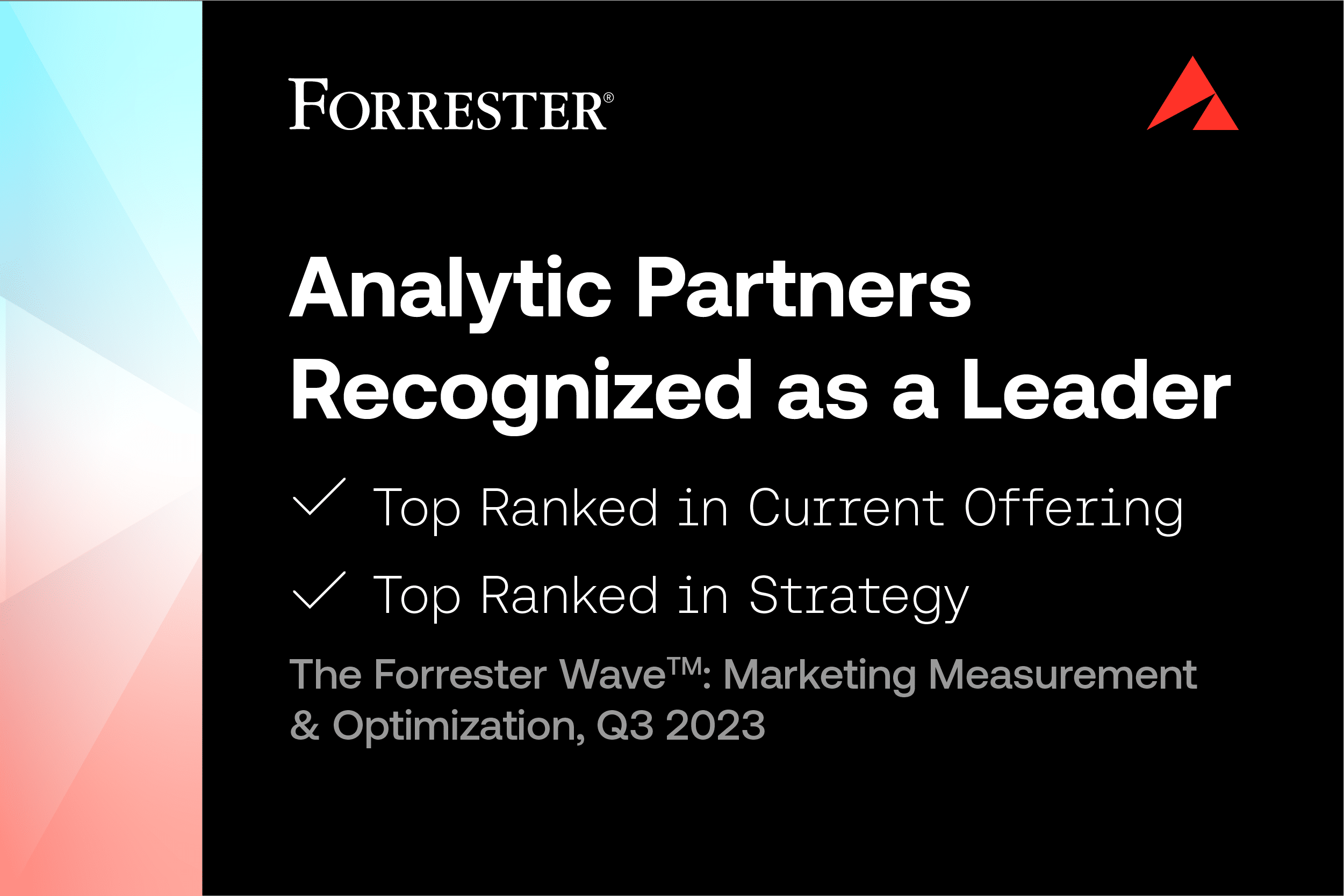Throughout my tenure at Analytic Partners, I have had the opportunity to work with several of the world’s top performing brands across multiple industries, providing guidance in areas such as marketing effectiveness, optimization and ROI maximization. No two businesses are exactly the same, but often enough, I’ve seen themes emerge that span across brands and industries, some good, and some not so good.
There are some tactics and principles that consistently do not work, yet I have seen them employed time and time again. This isn’t just an issue for the novice marketers either – some of the savviest and most venerable brands are vulnerable to poor marketing investment decisions. The following are the 5 most common marketing practices that are detrimental to your brand:
1) Over-targeting: Advertising to overly narrow demographic targets
Advertising to narrow demographic targets is a substantial risk that can dramatically inhibit reach, and subsequently, ROI.
Let’s say, for example, you are advertising a men’s hair loss prevention product. Your demo is clearly defined and, to simplify things let’s assume you have only two options: (a) Execute advertising through media outlets largely dominated by your target, e.g., Golf Magazine; or (b) Advertise more broadly on networks that reach people both within, and potentially beyond, your defined target audience. Examples of the latter option might include: ESPN, Sports Illustrated, and potentially even network TV, Yahoo, MSN, or CNN.
Advertising more broadly maximizes reach. Granted, it reaches some people who will fall outside the target demo (in my hypothetical, women are an easily identifiable example), but it also reaches far more people who are within the target demo, and ROIs will benefit, if costs are comparable. Furthermore, broader advertising builds equity with potential future consumers, and, in this hypothetical, women who may influence purchases for their spouses.
Combining well-targeted, wide-reaching executions with behavioral targeting and contextually relevant campaigns is, more often than not, a winning formula.
2) Communication Duplication: Driving excessive message frequency
Simply put, over-exposure leads to diminishing returns of advertising dollars. If a unique IP address is being served the same Digital display ad 100 times per week, precious ad dollars are being wasted. This may sound extreme and even unrealistic, but it happens more often than you would think, particularly as marketing managers are held accountable for lofty impression goals, coupled with the rise of programmatic buying. To avoid this pitfall, utilize frequency capping and become familiar with unique reach metrics in addition to impressions alone. Most importantly, ensure that incremental lift and ROI are being measured to understand whether your strategy is paying out.
3) Paid Search Premiums: Overpaying for Paid Search
There are multiple drivers of Paid Search ROI – keyword type, device, ad position, and industry, amongst others. However, the number one contributor is cost per click, particularly with respect to product and service price points.
Let’s do some quick math: If you are selling a product for $4.00 and your average Paid Search cost per click is $2.00, 50% of people who clicked on the ad would have to convert for you to break-even from a sales standpoint. Tack on margins, and the chances of payout become even less favorable and unrealistic.
Search is a critical component of the consumer pathway and a necessary cost of doing business that just may never pay out for some companies. Brands with low Paid Search ROIs may not necessarily doing anything wrong: it’s simply a matter of costs driven by supply and demand in the paid search marketplace. I typically recommend that marketers monitor CPCs and overall annual spending to strike a balance between maintaining an online presence to defend against competition, and preventing wasteful ad dollars that could be spent on higher-performing ROI vehicles.
4) Introverted Social Media: Employing a ‘set it & forget it’ strategy
“My brand page has x number of likes – what is that worth to the business?” This, along with other similar social media-related questions, represent some of the most commonly cited concerns by our clients today.
Time and time again, we see that number of likes do not necessarily indicate a successful fan page or strong social media presence. What drives engagement, and ultimately, conversion, is a brand’s proactivity in the social media space. Offering coupons and other exclusive deals via social media will get people talking about your brand. Posts delivering new or educational information become shared, and reach can expand exponentially in a short amount of time. Additionally, piggy-backing off of a major brand event, such as a successful Super Bowl commercial, builds buzz and the ability to go viral.
This is not to say that you should not have a social media presence if you don’t have the resources to maintain high levels of content. Social media plays a role in the consumer path (similar to a brand’s website), but opportunity exists to drive engagement and word of mouth to get the most bang for your buck from social media channels.
5) ‘Empty Shelf Advertising’: Advertising during a time, or in a place, where your product/service is unavailable
It is rarely intentional, but this misstep happens more often than one would think. Let’s say you are a CPG manufacturer launching a new product and supporting the launch with a multi-media advertising campaign. When should you begin flighting that campaign? Media should not be executed until significant distribution levels have been achieved. It is not worth spending ad dollars to support a soft, off-shelf launch because, for example, planograms don’t change until next month: wait the extra month so distribution and sell-through gaps do not undermine ROIs. If a new item is replacing an older item on shelf, wait 1 - 3 weeks after the product is on shelves at strong distribution levels before launching your new campaign.
In the retail and restaurant industries, it can be enticing to execute media in large markets with limited store coverage to build awareness. It is important to keep in mind, however, that awareness cannot convert to a sale without first being a part of an accessible consideration set.
As today’s marketing landscape continues to evolve with the rise of social media, programmatic buying, and increasing digital investment in general, marketers can often lose sight of the marketing fundamentals that deliver successful advertising performance. Avoiding these 5 common marketing mistakes will help to strengthen a brand’s marketing performance and maximize return on investment, justifying incremental dollars to drive continued long term brand growth.
For more information on how Analytic Partners can help put your brand on the right track, see our Services page.




